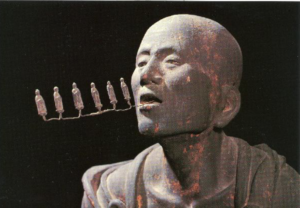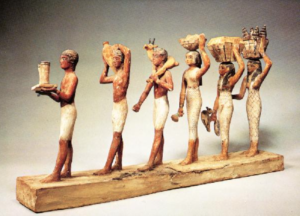A Moderate Defense of Multiplicity
The concepts of unity and multiplicity in the Fourth Way may seem in diametric opposition, with unity being the goal of our work, and multiplicity being the denying force, presented by the many ‘I’s. Buddhism casts a strong shadow of disapproval on multiplicity, contrasting the concept of maya, the world of illusion, with nirvana. Gurdjieff noted that “man’s name is Legion.” However, both Ouspensky and Gurdjieff and the esoteric traditions from which they drew are much more careful in handling these concepts.

Japanese Monk, Six Breaths
Development and Shattering of Personality
But, let’s backtrack a bit. When a child is born, he is born unlike other animals, with a capacity to wonder, a capacity that may later develop into magnetic center. Like any animal, he has reactions and observations emanating from instinctive fears and needs. Later, a child falls under influence of environmental and societal factors and essence influences of center of gravity and body type. Eventually the child forms the results from these factors into a personality, an illusion of unity. Only with great pain or great desire, does this illusion shatter in order to set him on a path toward a higher unity.
The Masquerade of the Many ‘I’s
So what about the pieces? The impulses that motivated and restrained one’s behavior once masqueraded as the pronoun I. Now, they become recognizable. These are the many ‘I’s. They are mere parts speaking for the whole, a legion of them for each individual. With this as one’s point of departure, there is no straight path to a higher level of unity. On the contrary, the path is tortuous and treacherous.
Developing the Steward as a Step toward Unity
The saving grace is that some ‘I’s can be harnessed to create a sort of inner armed guard. Spiritual texts refer often to this. In the Bible, David has 30 warriors in a special force, of which three were most special. Jesus has 12 disciples. These can symbolize ‘I’s of the ‘steward,’ that can guard attention, and unify our aim. The steward makes efforts to provide for an eventual unification with higher centers.

Processing of Offerings – Ancient Egypt
Without judicious efforts to battle with the Lower Self, unity is likely to be identification with an illusory idea. This leads at best to prolonged imagination, and at worst to wrong crystallization. And chief feature is usually in charge, if there is no steward. Features can mistake identification for the unity we seek, which is produced by transcending all ‘I’s, the goal of any spiritual seeker.
